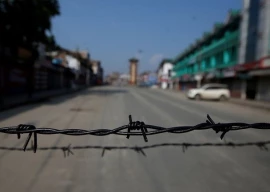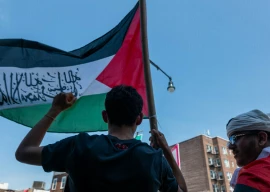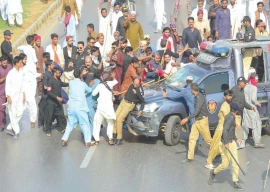
After cabinet shakeups and consolidation of political power, the monarchy concluded that crude oil was yesterday’s gold. The country must modernise its economy and liberalise its bureaucracy slowly but steadily. The future of this mineral-rich nation lies in the hands of the king’s son, the Deputy Crown Prince and the finance and defense minister, Mohammed bin Salman.
How Saudi Arabia plans to shake up its economy
New visions, new dimensions?
The 30-year termed 2015 ‘a year of quick fix’, 2016 ‘a year of organised quick fix’ and 2017 ‘a year of vision’. Riyadh is gearing swiftly towards reducing its traditional dependence on petro-chemicals by 2020 by diversifying the economy and adopting a new social contract –liberalising the state-society relationship.
Saudi Vision 2030, the document finally approved, comes at a time of turmoil in the Middle East as well as the global economy and geopolitics. Prima facie, the strategic shift marked by setting up its first Initial Public Offering by selling shares in Aramco to private sector and turning the Public Investment Fund into $2 trillion worth of sovereign wealth fund, another first for the kingdom, will give an unexpected impetus to the global economy.
While Riyadh aims to raise Foreign Direct Investment from 3.8% of GDP to the international standard of 5.7%, it also aims to manufacture half of the military hardware it needs. Currently, Saudi Arabia spends whopping $81 billion a year on military affairs. While initially the country aims to attract top European and American arms manufactures to set licensed production plants, it eventually aspires to become self-reliant for high-tech military needs.
How Saudi Arabia turned its greatest weapon on itself
Muslim countries, Turkey, Pakistan, Egypt, Indonesia and Malaysia which are already part of Saudi military coalition, will pool in their high skilled manpower and experiences. The joint venture may not only end western reliance for military equipment but also make the production financially viable given the volume of the prospective market.
But more dramatic are the plans to issue green cards for citizenship leading to gradual erosion of much-criticized sponsorship system, and the issuance of tourist visa for all nationalities, with caveat that the visitors will respect the local culture and traditions. Hosting 30 million visitors a year, however, is a mammoth undertaking for a country such as Saudi Arabia.
It may not be immediately clear but signs are that Saudi Arabia has gone through considerable introspection to abandon few laws attracting a negative global image, the top being refusal for driving rights for women. One noted indication in the Vision 2030 is increasing women's workforce participation by 30%.
The plan also aims to create jobs for the youth, which is two-third of the country’s population as the country has a fair share of foreign PhD holders. But the youth largely has shown little interest in work, thanks to the state subsidies. Thus, the document aims to increase the existing unemployment rate of 7% to 11.6%.
Countering challenges
The ambitious vision is a statement of self-confidence by the rulers. King Salman’s reign already stands out from his predecessor owing to aggressive foreign and defense policies. Hence, the plan will face greater challenges from within the kingdom; from fiscal to social and religious conservatives.
Change is coming to Saudi Arabia
Saudi initiatives towards belt-tightening have already faced criticism. Thus, the plan addresses the question of reducing the subsidies in a less alarming manner. Prince Mohammad has already witnessed a 16% decline in the country’s foreign exchange reserves, partly due to Yemen war and petroleum prices. He aspires to make the economy sustainable if oil prices fall as low as $30 per barrel from that of $45.
Moreover, internal opposition, austerity measures, regional geostrategic environment such as prolonged Iranian intervention in Syria, likely uprising in Bahrain, spilling conflict in Yemen are factors set to undermine Saudi Arabia’s capacity to follow the vision. Thus, Riyadh cannot achieve the mammoth task of restructuring its economy along unprecedented lines without shrewd and groundbreaking diplomatic actions.
Although for Pakistan diversification of Saudi Arabia’s economy comes as good news. The country will have a bigger appetite for its skilled manpower and specialists, which remain underutilised in the existing lackluster conditions. In the short run, however, low skilled or unskilled labour may be laid off faster than expected straining Pakistan’s economy as well as Egypt’s or Indonesia’s.
Naveed Ahmad is a Pakistani investigative journalist and academic with extensive reporting experience in the Middle East and North Africa. He is based in Doha and Istanbul. He tweets @naveed360























COMMENTS
Comments are moderated and generally will be posted if they are on-topic and not abusive.
For more information, please see our Comments FAQ